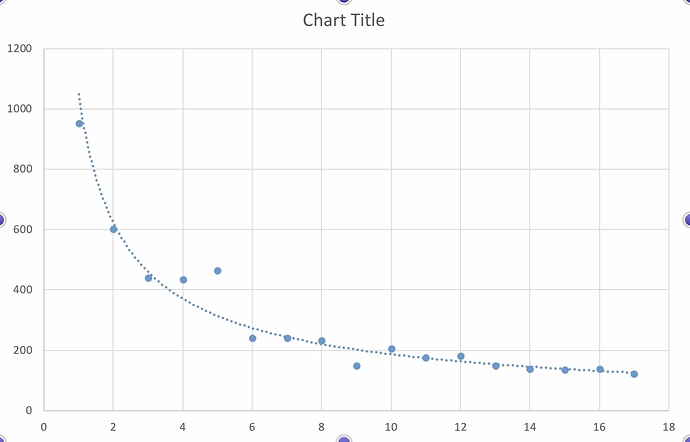The attachment Chris links, “Genetic Entropy - Recorded in the Bible”, by Sanford, Pamplin, and Rupe, 2014, makes the argument that the Biblical record of decay in lifespans after the flood must be real because, quoting from the paper:
The data is coherent and internally consistent in a way that could never happen by chance.
…
The smooth curve is shaped according to the specific formula shown (y = 1064.7x-.766).
…
The first explanation would be that the mathematical nature of the decline arose because all these data points, scattered in various books of the Old Testament, were fabricated by a sophisticated and scheming single author. That such an author would need to be a skilled mathematician.
…
The second explanation would be that the mathematical nature of the declining lifespans arose because the Biblical accounts are true, and are actually faithfully recording the historical unfolding of some fundamental natural degenerative process.
End of quotes. I think I’ve been fair in excising their essential argument, correct me if I’m wrong.
We probably are at an impasse as you suggest, but I just wanted to make clear what I meant to state in case I failed to communicate in my prior posts. True, lifespans of hundreds of years are certainly remarkable. As you observe, there is an obvious steep decline in the recorded lifespans post flood, which then levels off to more or less typical of today, depending on conditions. I am not taking a position here as to if these lifespans are real or honorary or reflecting some sort of numerology. It is surely reasonable to presume that there would be some significance to the drop off in age, but as to what it is, I have no insight. I do not know. I have no idea. I have given that little thought.
It is the assertion, however, that the data yields a mathematical curve that is, and it is in this context I use the term “remarkable”, that I repudiate. To somewhat rehash, any set of trending ordered pairs can be modeled by an exponential equation of the form given, so the lifespan data tabled here is not unique in that respect. Hence, the data is not “remarkable” in a statistical respect. The premise that the author of these lifespans would have to have been a skilled mathematician is simply invalid, because no matter what ages the author chose, so long as you have a trend, you could derive an exponential curve of the very exact same form. Only the parameters would change. I’m not even touching the concerns with data selectivity. Therefore, the conclusion that there is a hidden math, unknown to the original authors but available to us, which self-authenticates these lifespans and leaves no option but to accept them as true, is complete bunk. So my position is this and no further than this, that statistics has no bearing on the literal or literate nature of the recorded lifespans, and on that point, I believe I hold the high ground.
